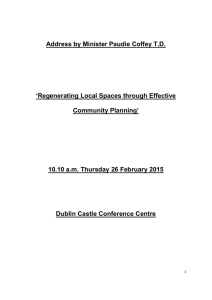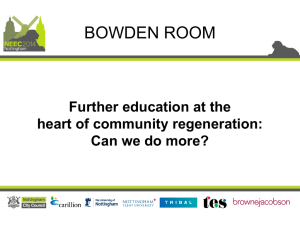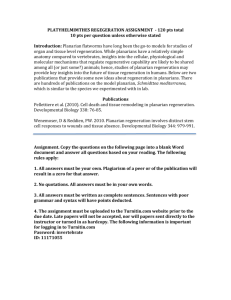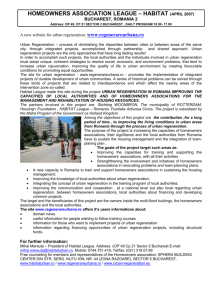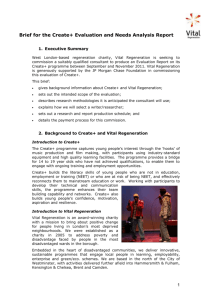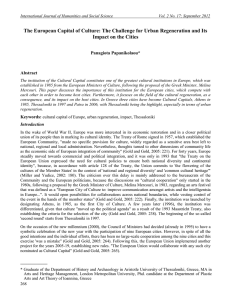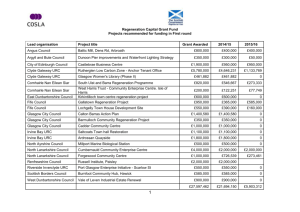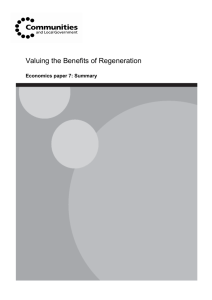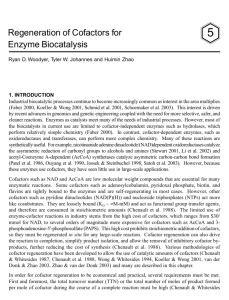alan mcgregor`s overview - The Scottish Government
advertisement
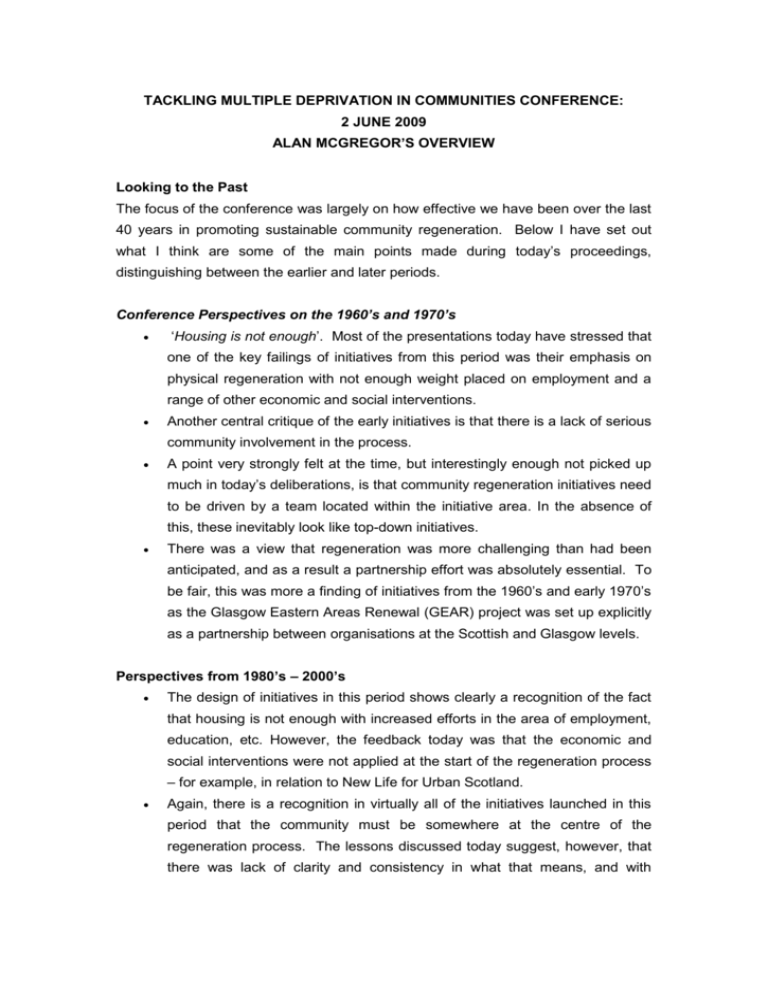
TACKLING MULTIPLE DEPRIVATION IN COMMUNITIES CONFERENCE: 2 JUNE 2009 ALAN MCGREGOR’S OVERVIEW Looking to the Past The focus of the conference was largely on how effective we have been over the last 40 years in promoting sustainable community regeneration. Below I have set out what I think are some of the main points made during today’s proceedings, distinguishing between the earlier and later periods. Conference Perspectives on the 1960’s and 1970’s ‘Housing is not enough’. Most of the presentations today have stressed that one of the key failings of initiatives from this period was their emphasis on physical regeneration with not enough weight placed on employment and a range of other economic and social interventions. Another central critique of the early initiatives is that there is a lack of serious community involvement in the process. A point very strongly felt at the time, but interestingly enough not picked up much in today’s deliberations, is that community regeneration initiatives need to be driven by a team located within the initiative area. In the absence of this, these inevitably look like top-down initiatives. There was a view that regeneration was more challenging than had been anticipated, and as a result a partnership effort was absolutely essential. To be fair, this was more a finding of initiatives from the 1960’s and early 1970’s as the Glasgow Eastern Areas Renewal (GEAR) project was set up explicitly as a partnership between organisations at the Scottish and Glasgow levels. Perspectives from 1980’s – 2000’s The design of initiatives in this period shows clearly a recognition of the fact that housing is not enough with increased efforts in the area of employment, education, etc. However, the feedback today was that the economic and social interventions were not applied at the start of the regeneration process – for example, in relation to New Life for Urban Scotland. Again, there is a recognition in virtually all of the initiatives launched in this period that the community must be somewhere at the centre of the regeneration process. The lessons discussed today suggest, however, that there was lack of clarity and consistency in what that means, and with 2 community involvement more at the ‘consultation’ rather than at the ‘empowerment’ end of the spectrum. Another theme running through today’s presentations is that although perhaps more systematic and comprehensive approaches to communitybased regeneration have been adopted, there are concerns that the hardest to help groups in the community were not being reached effectively. My Own Perspectives Looking Backwards My own perspectives are based on a professional and research involvement in a number of regeneration initiatives over this period. I provided research support to the Paisley Community Development Programme – a Home Office pilot initiative focused on Ferguslie Park, but involving a number of test sites around Britain. While working with the Scottish Development Agency, I played a role in the early years of the GEAR project, amongst other things sitting on the GEAR Employment Working Group which brought together a wide range of partners at the Glasgow and Scotland level. I was a founder Board member of the Castlemilk Economic Development Agency, set up in 1989 to promote the economic and employment agenda of the New Life Partnership. I am a Board Member of Glasgow Works, charged with delivering significant reductions in worklessness as one of 15 DWP City Strategy Pathfinders around Britain. Partly informed by direct involvement and partly by research and evaluation work my take on the past is as follows. From where we stand currently, it still looks as if we have pretty much the same most deprived areas as we had at the start of the 1970’s – and probably a lot further back if we had the data to show this comprehensively. This is disappointing, as particularly over the last 15 years the gap on a number of indicators has closed for the most disadvantaged groups. For example, employment rates for lone parents have risen from 46% to 56% over the last 10 years. I reject the idea that initiatives from the early 1970’s onwards either downplayed the importance of the economy and employment or delayed the introduction of measures to tackle these. I don’t think this is the way it actually happened in practice. The critical weakness of the interventions 3 around the economy and employment was not identified by any of today’s speakers – and this is simply that the authorities would quite happily invest £40,000 in supporting housing refurbishment or incentivising private sector investment in housing, but would countenance only a much smaller investment in ‘regenerating’ a workless household or a long-term unemployment individual. We must get the diagnosis right on issues such as this if we are to put together more effective interventions going forward. Few of today’s presenters tackled the perhaps central issues which holds back regeneration, namely the contribution of mainstream service delivery departments. This was touched upon in Andy Fyffe’s analysis of the limitations of the Social Inclusion Partnerships (SIPs) and some very interesting findings were presented by the Universities of Glasgow and Heriot-Watt on delivering environmental services into deprived areas. The reality is that, stripping out physical investment in housing regeneration, the spend by regeneration initiatives on economic and social services of one kind or another is miniscule relative to the inputs of the mainstream providers in health, education, and employment, etc. The critical tone coming through the day is unduly harsh. For example, in my own area of interest – reducing worklessness and raising skills – we have made significant progress. For example, the employment rate in the City of Glasgow has risen from 55% to 65%. This could not have happened without significant gains in employment in the city’s more disadvantaged communities. Also, there are a whole range of very effective interventions now in place in the employability arena as our practice has improved significantly over time. Looking Forward In broad terms, taking on board the key lessons presented to the conference today, but perhaps injecting a note of greater optimism, the key challenges moving forward are: to improve significantly the delivery of mainstream services into our most disadvantaged communities, both in terms of the volume and quality of the service delivered. to identify and spread the good practice in a wide range of areas such as employability, education, working with young people, etc. to join together improved practice in terms of area-based initiatives with more effective mainstream delivery to allow us to drive with greater impetus into 4 the problems that need to be tackled and also to release the great underutilised potential that resides in our most disadvantaged communities. to agree on the most effective ways of engaging with communities to generate a sustainable process of community regeneration, and to make this the norm throughout these communities. to commit to making significant investments in people and households – and not just in the houses they live in. Professor Alan McGregor Director of Training and Employment Research Unit, University of Glasgow June 2009



